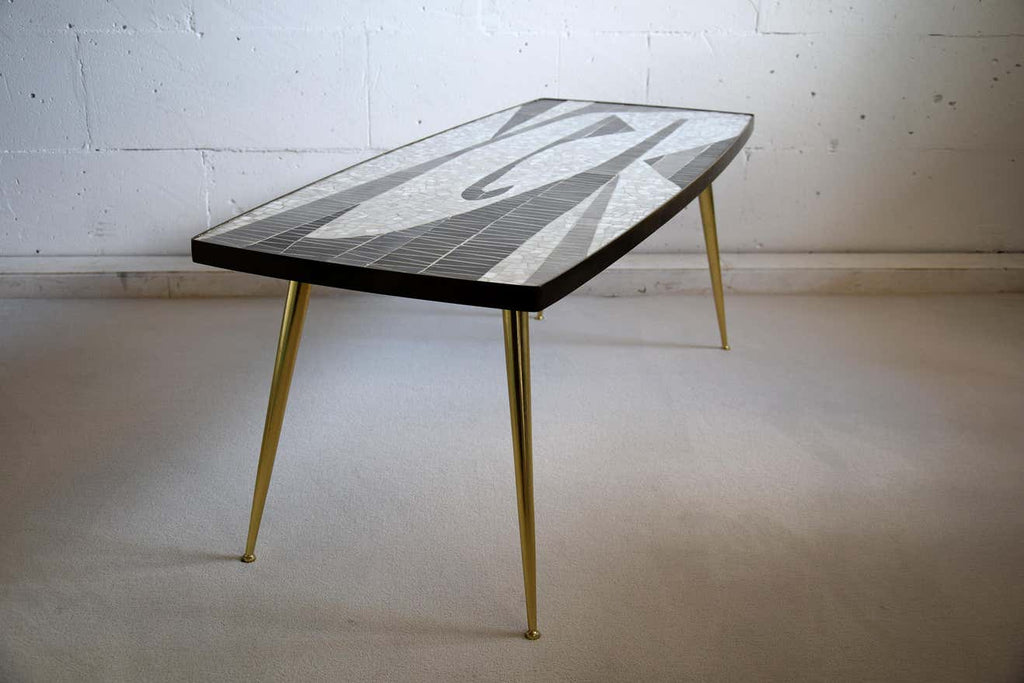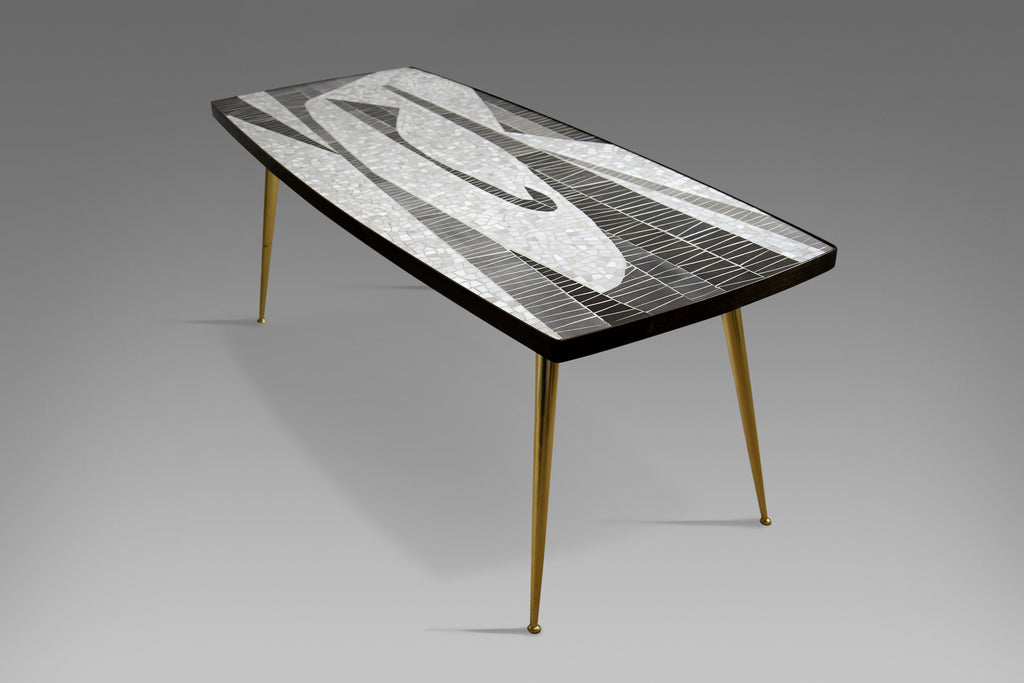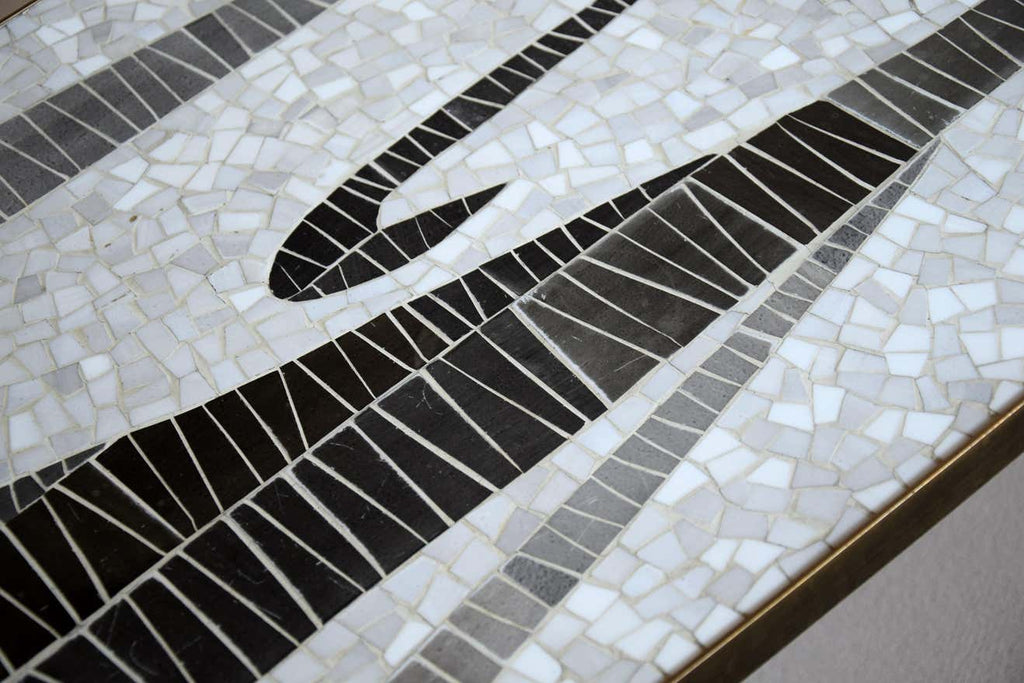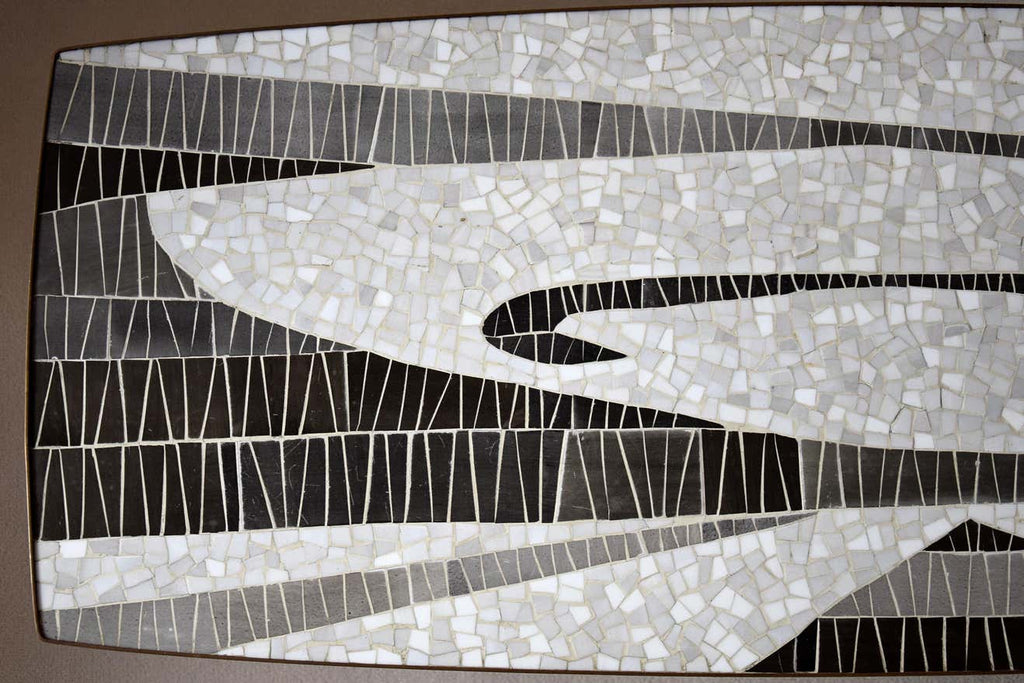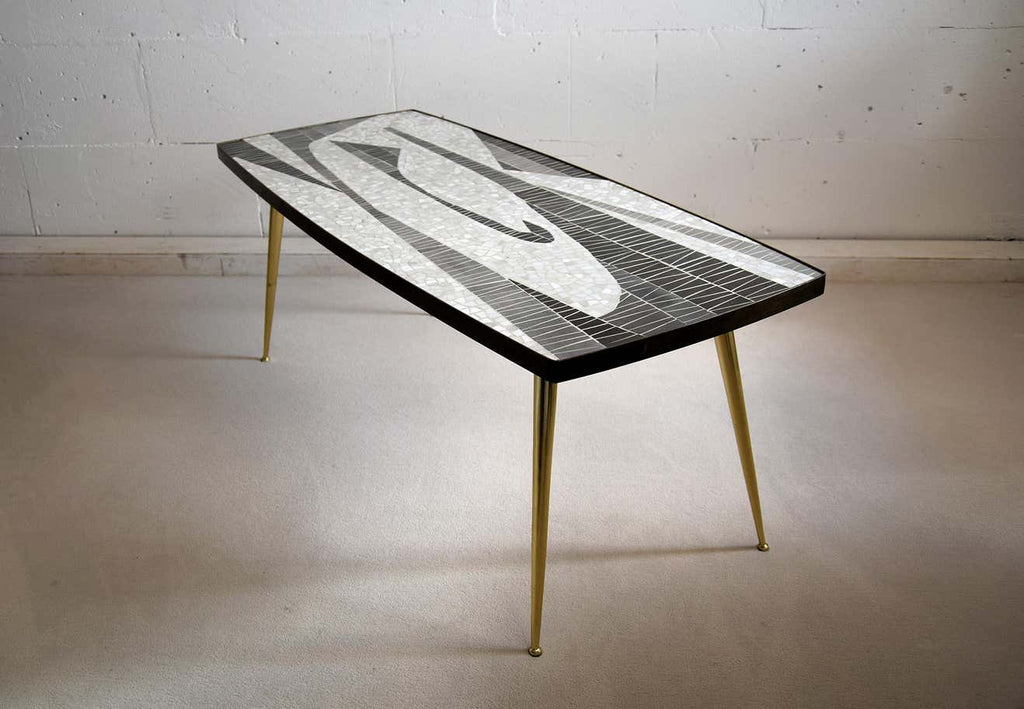Mid-Century Modern Sculptural Mosaic Coffee Table by Berthold Muller
Berthold MullerBeautiful, stylish and elegant Mosaic 1960's coffee table made by the sculptor Berthold Muller.
This beauty will be shipped insured overseas in a custom made wooden crate. Cost of transport to the US, Euro 650, is crate included.
Wear consistent with age and use.
We ship worldwide. Request a shipping quote by e-mail to tacojoustra@vintageobjects.com mentioning the piece you are interested in.
Pick-up by appointment only.
We are a 1stDibs Platinum 5 Star Dealer.
Height: 17.72 in (45 cm)Width: 18.9 in (48 cm)Depth: 45.28 in (115 cm)
Born in Oerlinghausen near Bielefeld in 1893, [ Berthold Müller, he himself added Oerlinghausen to his name later, began his studies of sculpture under Hans Perathoner at the Bielefeld College of Arts and Crafts in 1910 while still a schoolboy. Completing his grammar school education in the classical humanities in Bielefeld in 1912, he moved to Berlin in 1914 and studied at the Charlottenburg School of Applied Arts. During the First World War he was conscripted for service with cavalry regiments in Russia, Galicia and France. In 1919 he was able to continue his interrupted studies in Berlin under Hans Perathoner and Willy Jäckel. In 1922, together with his wife, Jenny Wiegmann, he converted to Catholicism at the Abbey of Maria Laach. During the 1920s he devoted himself to religious art: commissions for sculptures on church buildings, participation in the “Exhibition of Religious Art” at the Ernst Arnold Gallery in Dresden and in the Vatican Mission Exhibition in the Holy Year of 1925 with his large sculpture “Pope Gregory the Great”. In 1929 he took part in the annual exhibition of the Berlin Secession and, in 1931, in the exhibitions of the Prussian Academy of Arts in Berlin. It was also in 1931 that he and his wife Jenny separated. Two years later, in 1933, he married Emily Sturm. In that same year he organized, and took part in, the Catholic section of the Exhibition of Ecclesiastical Art during the World’s Fair in Chicago. From then on he spent the summer months mainly in Kressbronn on Lake Constance. In 1936 he founded a mosaic workshop in Berlin and, on 7 March of that same year, his son Bruno was born. He finally moved for long term to Kressbronn in 1940. His studio, mosaic workshop and apartment in Berlin were destroyed in an air raid in 1944. After 1945 Berthold Müller-Oerlinghausen made important contributions to a revival of the cultural life of the communities on Lake Constance: the rebuilding of his mosaic workshop in Kressbronn in 1946, exhibitions in the Municipal Museum of Lindau, the founding in 1947 of the “Upper Swabian Secession” (renamed “Secession of Upper Swabia/Lake Constance” in 1950), the founding of the “Artists’ Society of the Town and District of Lindau” (renamed “Lindau Art Patrons’ Society” in 1956), solo exhibitions at the Wessenberghaus in Constance and elsewhere, a retrospective exhibition at the Municipal Museum of Lindau in 1963 marking his 70th birthday. A monograph of the work of Berthold Müller-Oerlinghausen, written by Ulrich Gertz, was published in 1974. Berthold Müller-Oerlinghausen died in Kressbronn in 1979, too soon to receive the planned honorary title of professor from the State of Baden-Württemberg.




